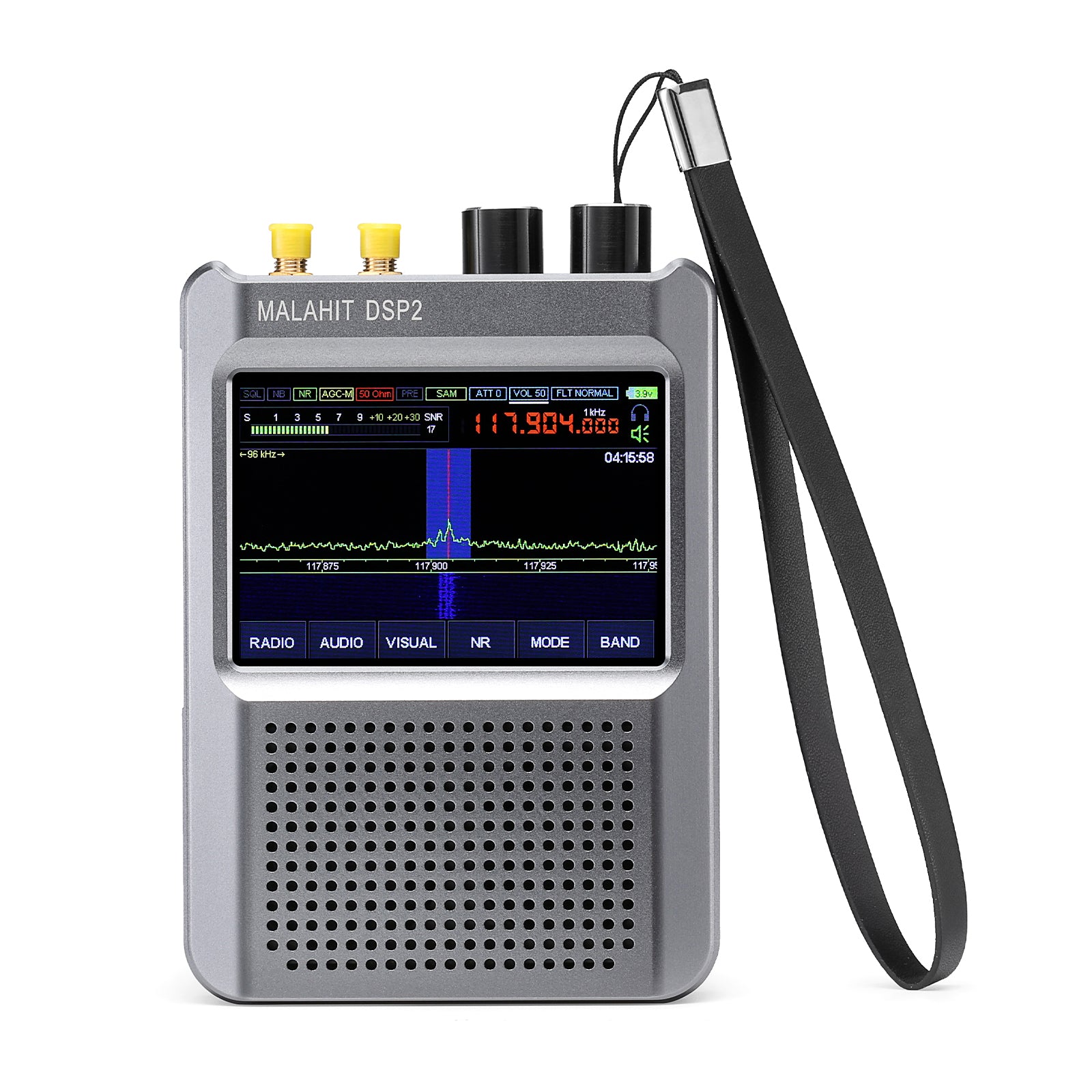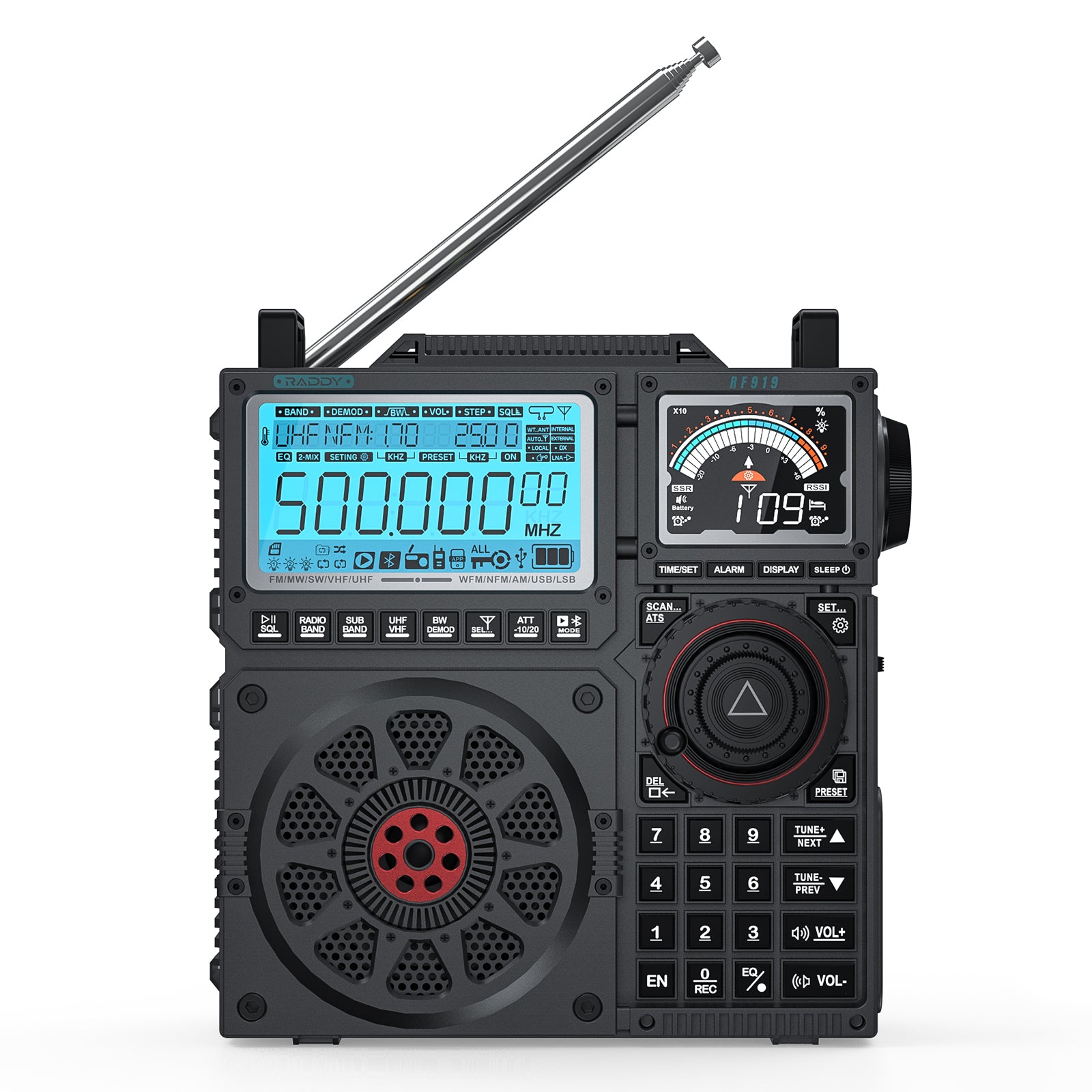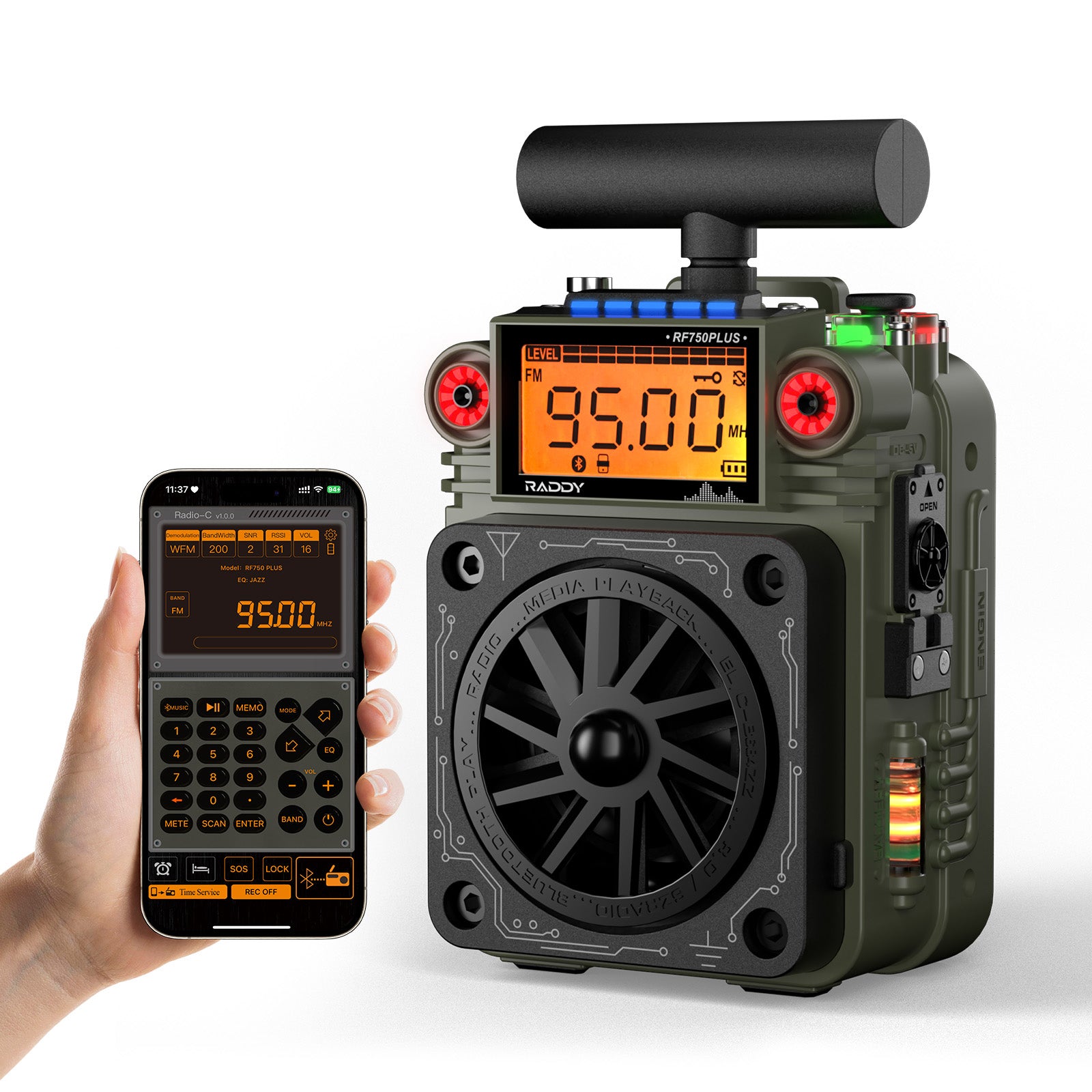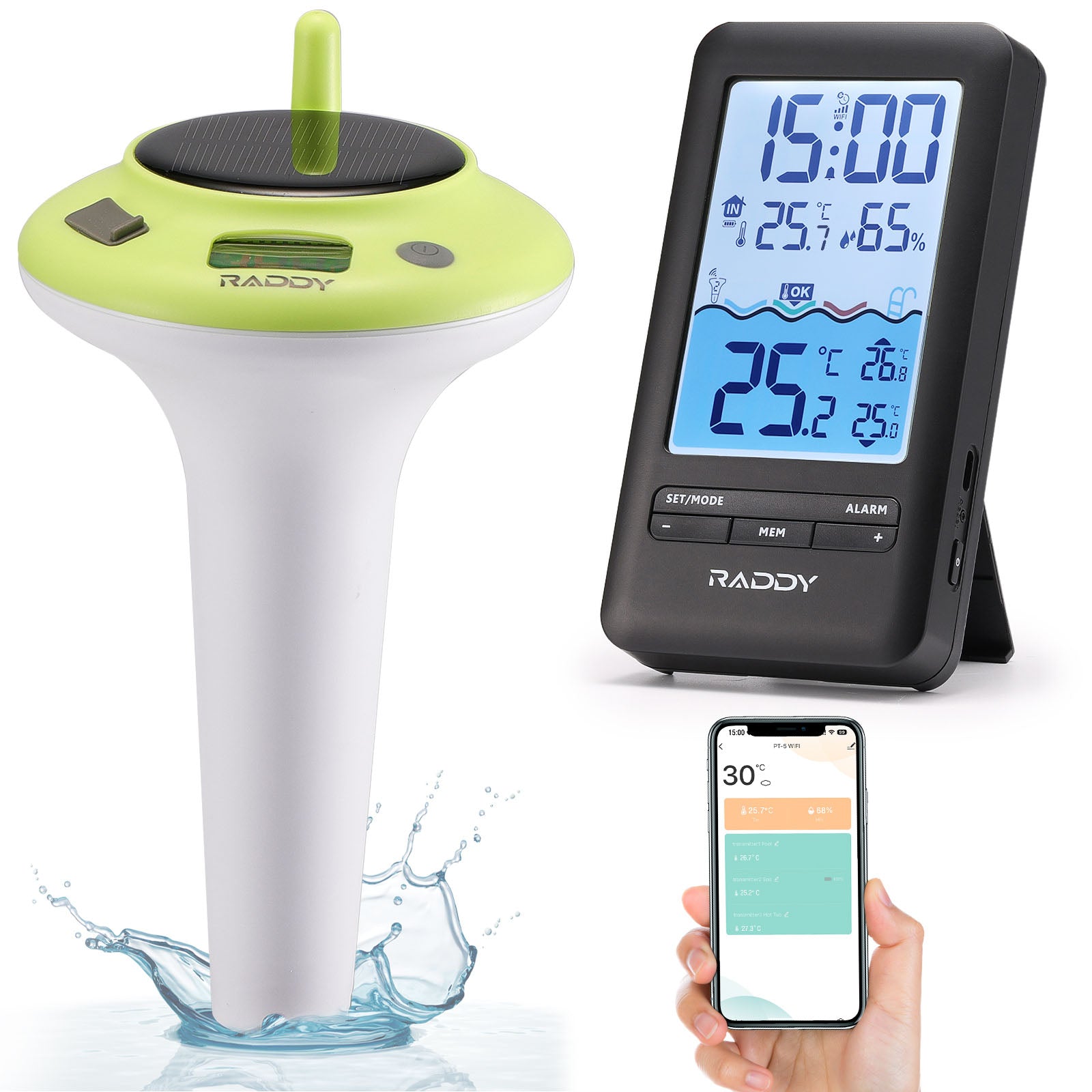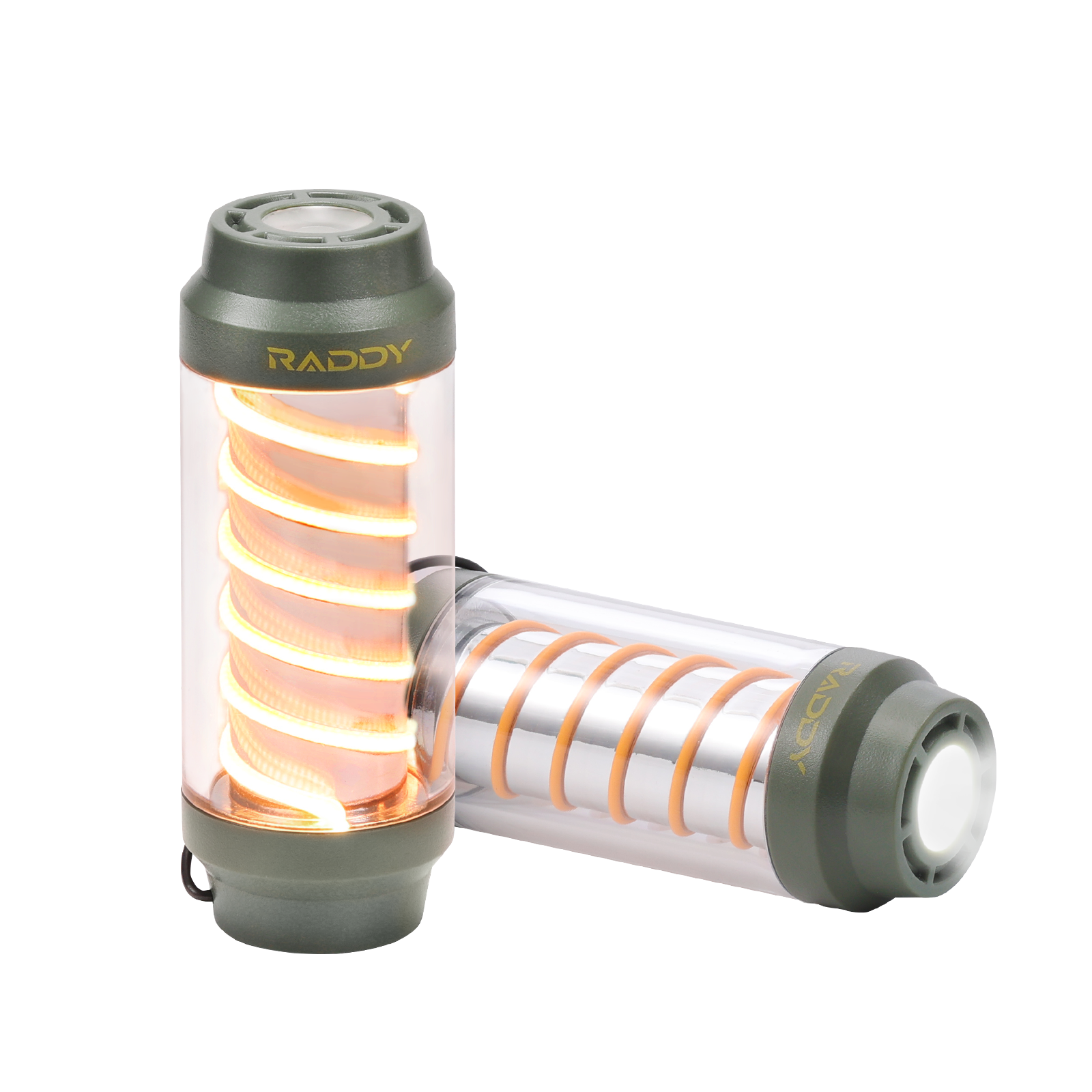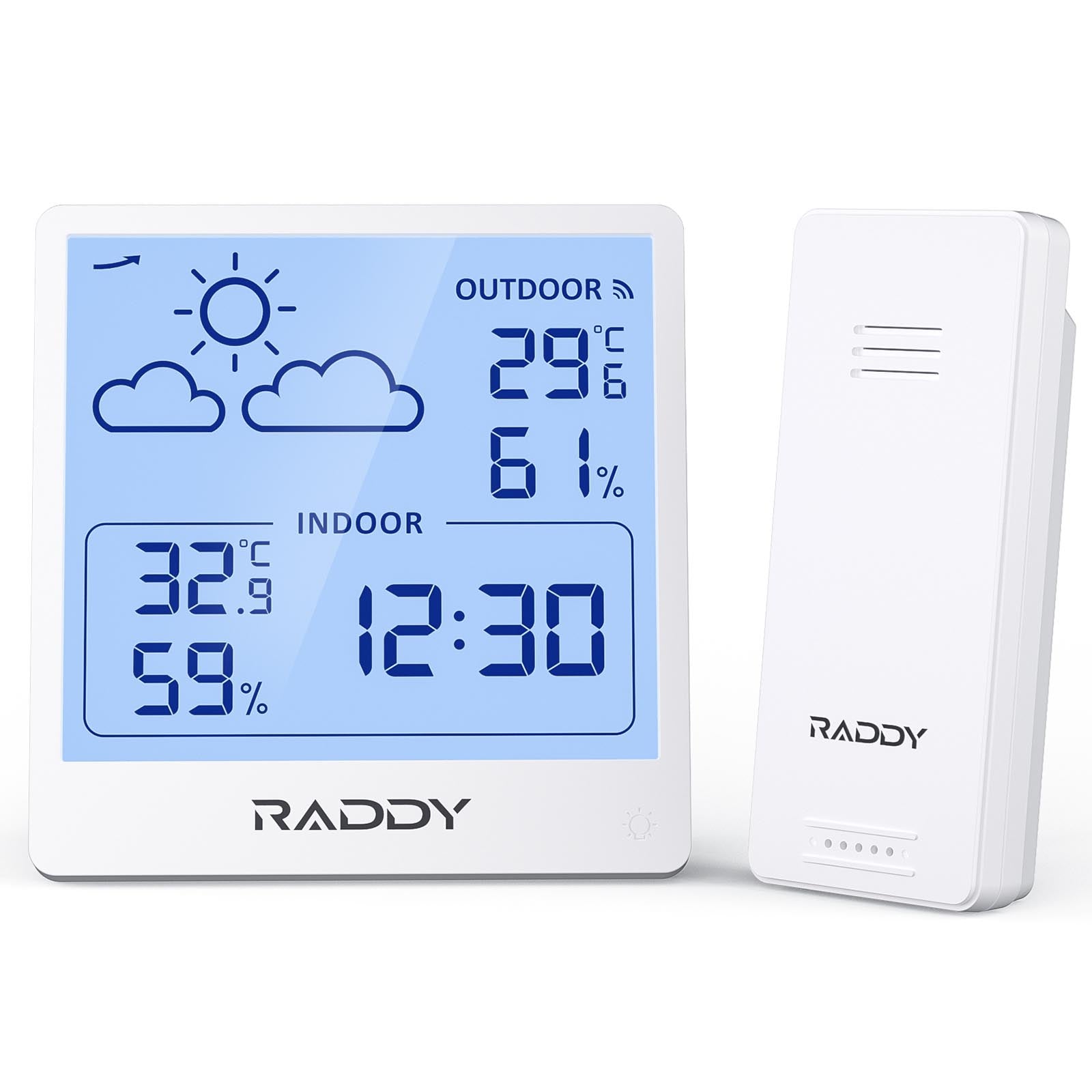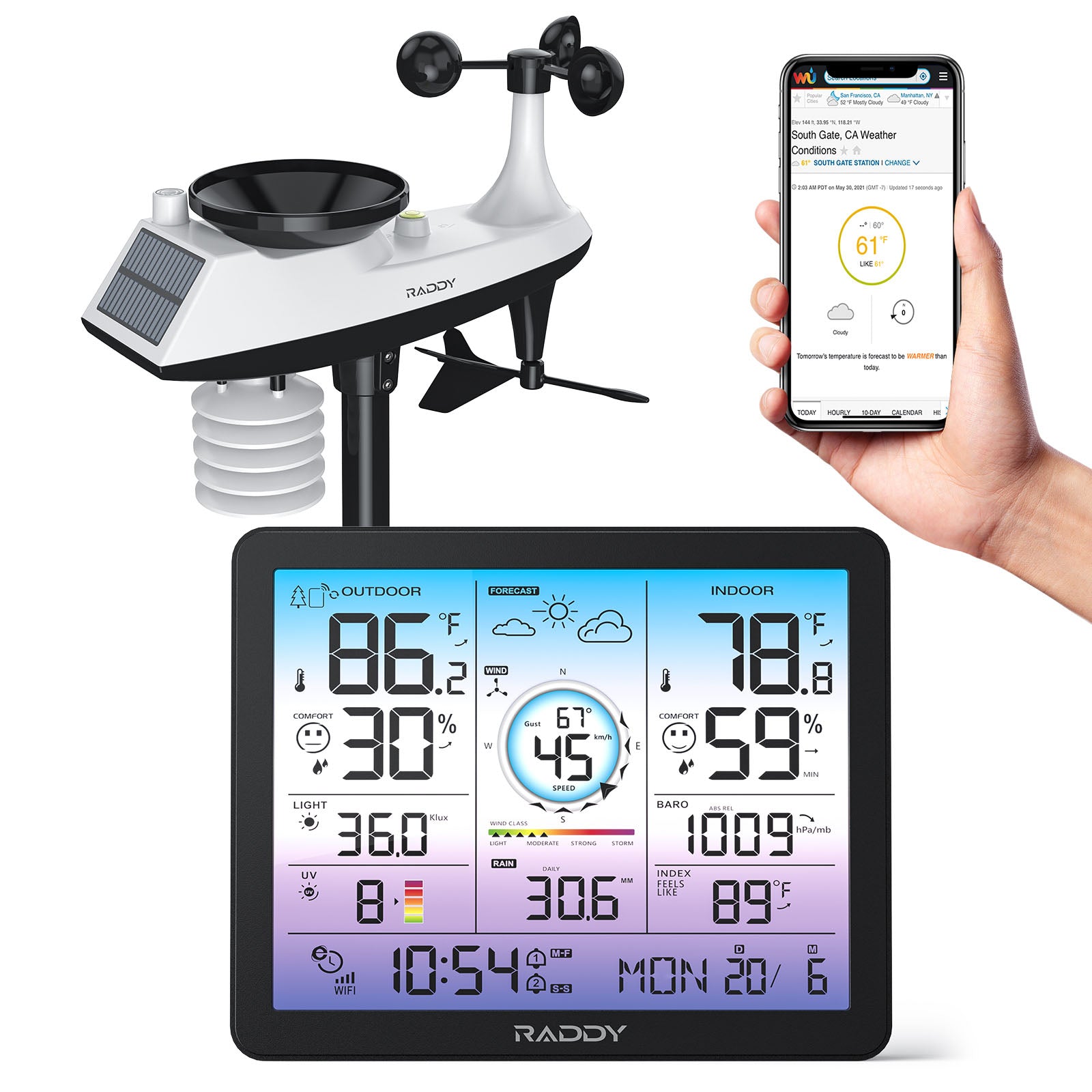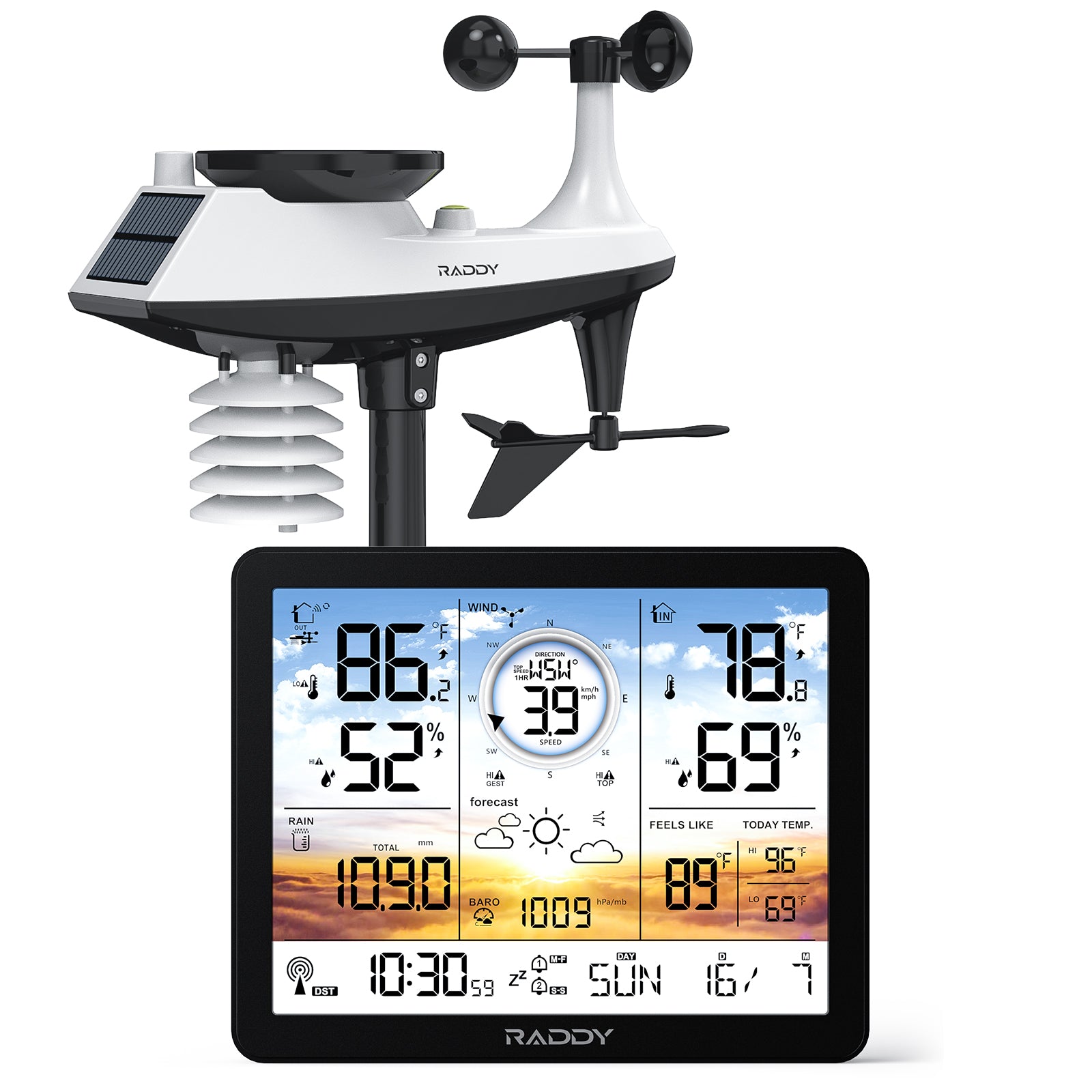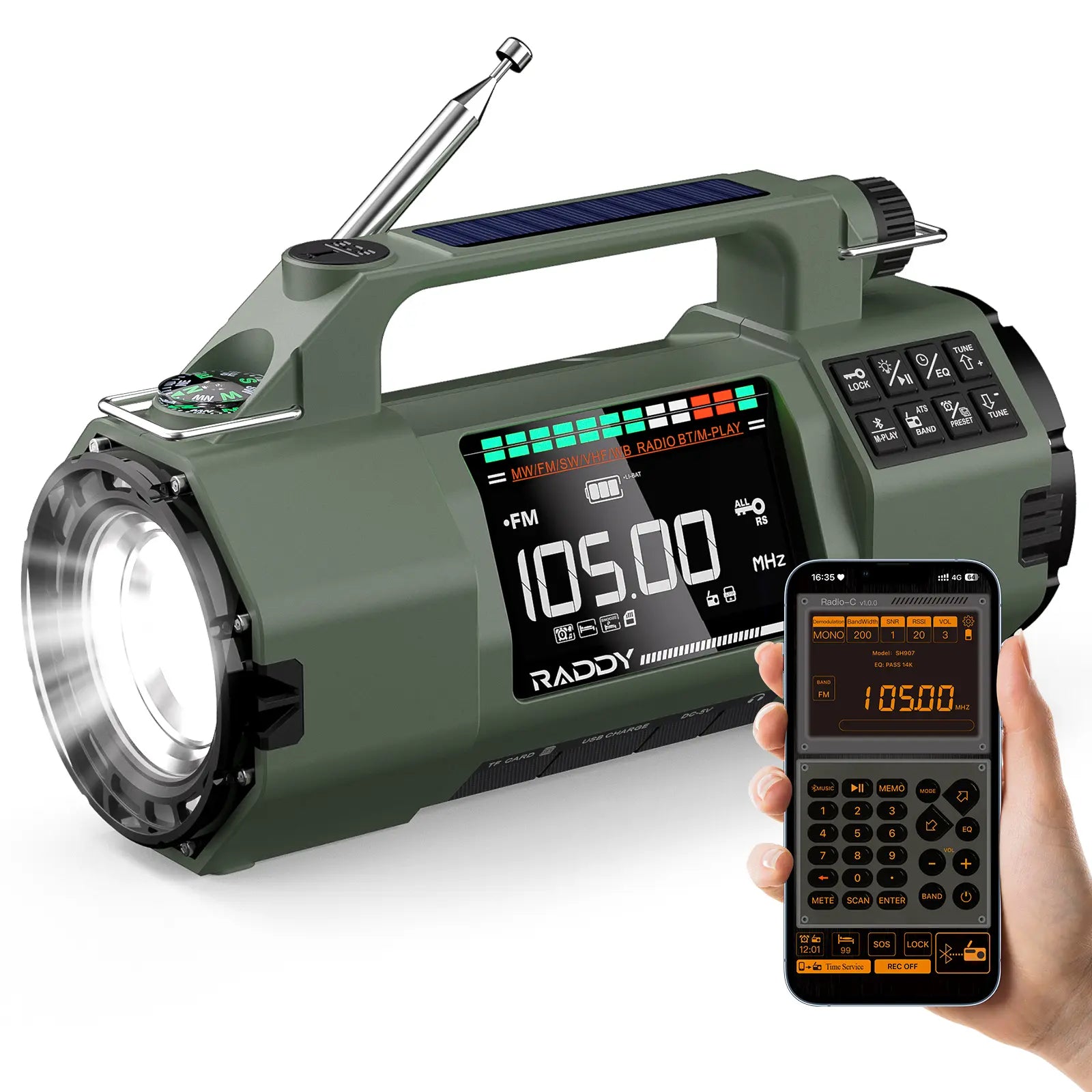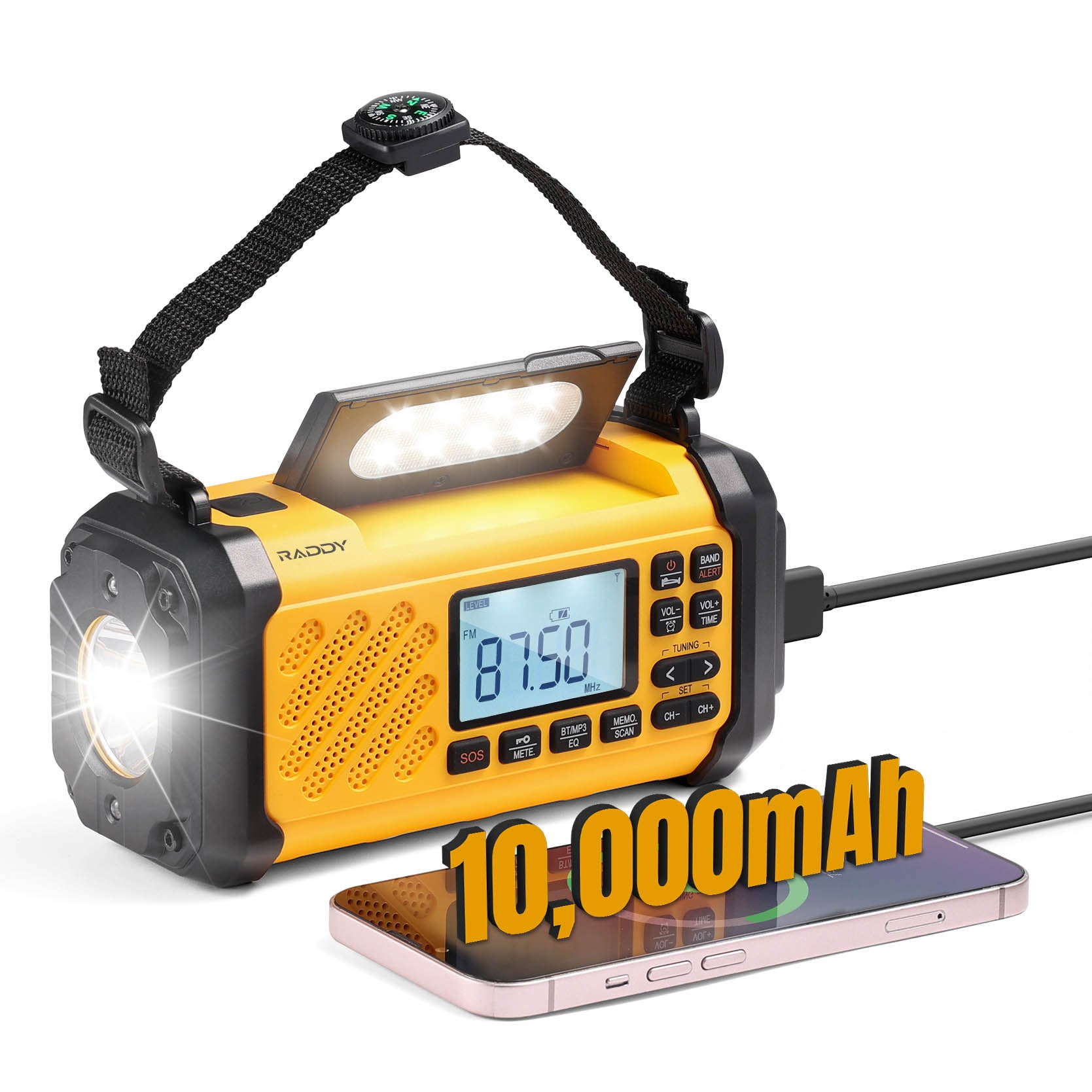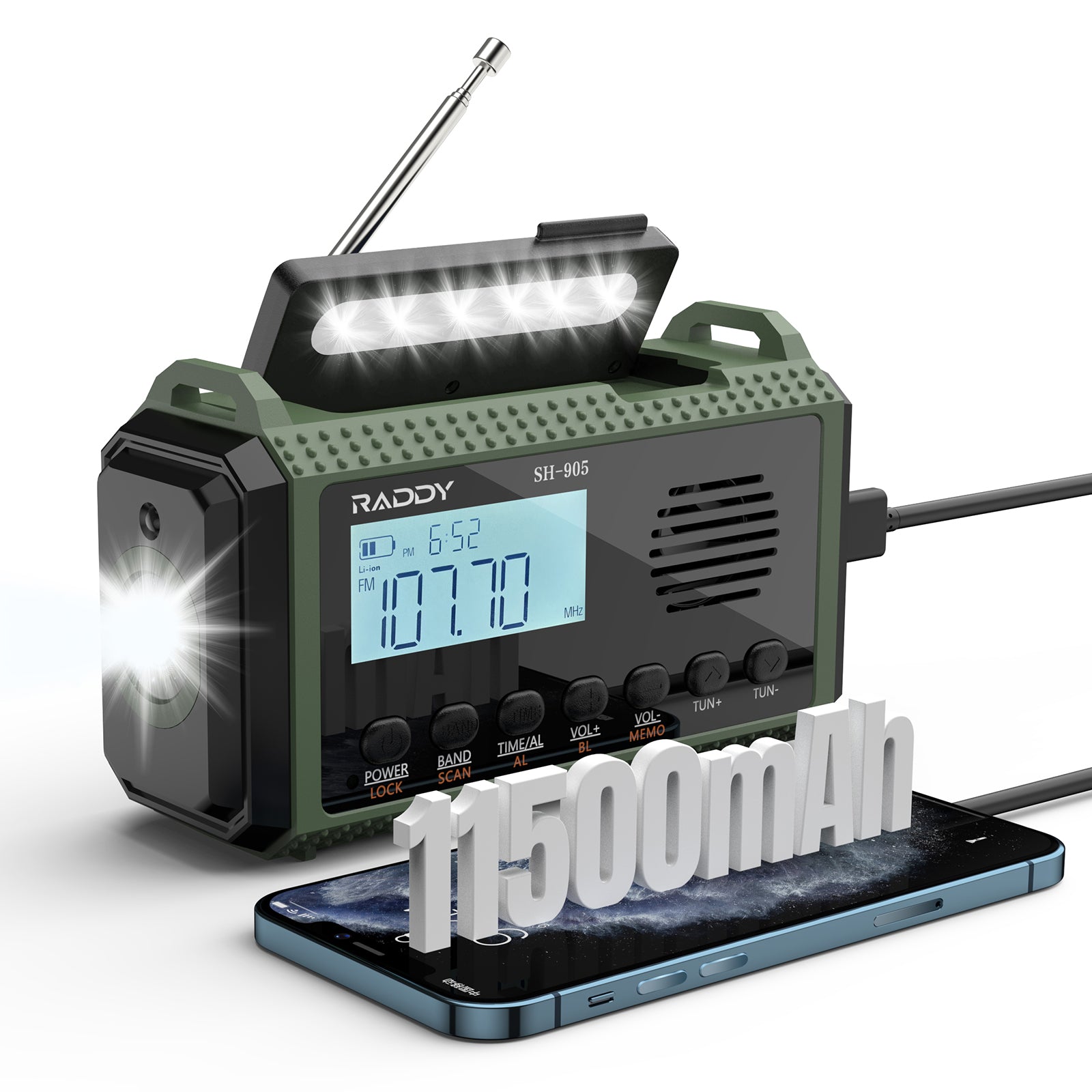-- by Craig WB3GCK
A while back, I purchased the Raddy RF750 Multimedia Music Player and did a blog post reviewing that remarkable little radio. The folks at Radioddity reached out to me recently to see if I would be interested in taking a look at their latest offering. A week or so later, I received the Raddy RF760.
[Disclaimer: In the interest of full disclosure, this radio was sent to me free of charge to evaluate and review. This was with the understanding that I would write an honest and unbiased review.]
What It Is
The seller refers to the RF760 as a “full-band radio”. That’s an apt description, since it covers everything from the AM broadcast band up through the UHF range.

Here are the specs from the iraddy.com website:
- FM 1: 64.0-108MHZ
- FM 2: 76.0-108MHZ
- FM 3: 87.5-108MHZ
- AM: 520-1710KHZ
- SW: 2.00-30.00MHZ
- CB: 25.00-28.00MHZ
- AIR: 118.00-138.00MHZ
- VHF UHF: 20.000-520MHZ
- VHF: 30.00-223.00MHZ
- VHF: 144.00-148.00MHZ
- VHF: 156.025-163.275MHZ
- UHF: 430.00-520.00MHZ
- WX: 162.400-162.550MHZ
- Product dimensions: 4.37 x 2.36 x 0.79’’ / 11.1 x 6 x 2CM
- Lithium battery: BL5C 1000mAH 3.7v 3.8WH
- Loudspeaker: Ф40MM 8Ω 1W
- Headphone output: 3.5MM stereo input
- External antenna hole: 3.5MM
- Storage Capacity:700 stations in total(FM: 100, MW: 100, SW: 100, AIR: 100, CB: 100, VHF/UHF: 100, UBD: 100)
With the battery installed, the RF760 weighed in at a mere 3.8 ounces (108 grams) on my kitchen scale.
The box includes:
- RF760 radio
- 1000MAH 3.7V Lithium battery
- Earbuds
- USB-C cable for charging
- External antenna wire (approx. 10 feet)
- Wrist strap
- Storage pouch
- User manual
RF760 vs RF750
It’s clear from the specifications that the RF760 is not an upgraded RF750. The RF750, with its Bluetooth and ability to play MP3 files, is more of a multimedia player. The RF760 does not have those capabilities, but, rather, provides expanded frequency coverage.
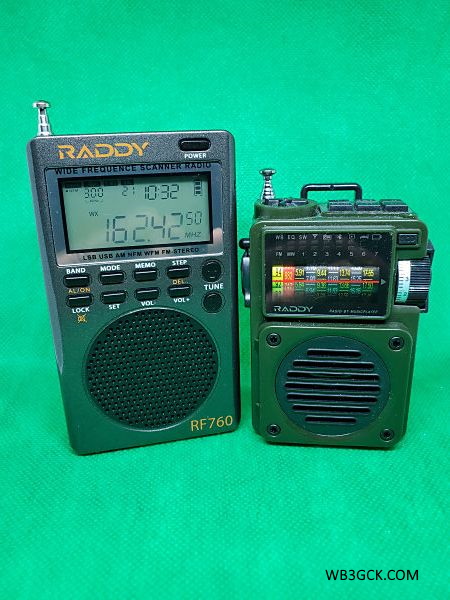
In my view, the RF760 is aimed more towards shortwave listeners and scanning enthusiasts. It includes features like selectable bandwidths, selectable demodulation modes on certain bands (AM/USB/LSB/NFM), and adjustable squelch.
The RF760 also includes a headphone jack (earbuds included) and a connection for an external wire antenna. These features are lacking on the RF750. The RF760 also has a digital display, which the RF750 does not. Both radios are charged via a USB-C connector.
The RF760’s additional features come with a higher price tag. As of this writing, it was selling for $99.99 USD
My Impressions
The RF760 is one small radio. It’s roughly about the size of an Altoids tin and weighs next to nothing. (It weighs about 0.65 ounces less than the RF750.) You can fit the RF760 in a shirt pocket, and you might even forget that it’s in there.
There’s a lot going on with the RF760. Even with the power off, a press of any button will light up the display showing time and temperature. Oh yeah, did I mention this thing even has a built-in thermometer? It even includes an alarm clock and a sleep timer. If you can think of a function, the RF760 probably has it.
The user manual does a decent job of covering the myriad of features in this radio. The small size of the printed manual, however, is a little tough on my old eyes. Fortunately, the Raddy website has a PDF version of the manual for downloading. The softcopy manual allows me to search for specific functions, which is handy. I also stored a copy on my cell phone, so I always have it available. As is typical of manuals for Chinese products, some of the wording is not always clear. For example, a section covering how to delete a station that has been saved to memory is titled “Delete the radio.”
The various configuration options (e.g., bandwidth, demodulation mode, tuning increments) vary according to the band you are on. Once you get the hang of it, navigating through the options and selecting specific values becomes an easy task.
In the FM mode, the sound quality is reasonably good, considering the RF760’s diminutive size. In all honesty though, I think the RF760’s audio lacks the richness and fullness of the RF750. When using the included earbuds, however, the RF760’s audio is greatly improved. On FM, make sure you have the radio set for the proper de-emphasis (75 microseconds here in the U.S.).
The weather alert function is one of the more important features for me, and I had the opportunity to give it a “real world” test. My area was under a tornado watch, and we had multiple severe thunderstorm warnings. While tuned to the weather band, a long press of the “SET” button places the radio in the “SCAN” mode. When NOAA issues an alert, the radio comes on with a brief tone followed by the weather station’s audio. There’s no loud siren like the RF750 has, but that’s fine with me. After an alert, you need to long-press the “SET” button to go back into the “SCAN” mode. During the storms, the RF760’s weather alert function worked flawlessly, going off three or four times.
Tuning is interesting in that it uses a combination of two methods: up/down tuning buttons on the front panel and a rotary “shuttle tuning” knob on the right side of the radio. You can select the tuning increments for the buttons, which is helpful. You can also select the digit of the displayed frequency that is adjusted by the rotary knob. Now, I’m an old “knob spinner” from way back, so I’m generally not a big fan of using buttons for tuning. However, once you get the hang of using the shuttle tuning knob, you can tune to a specific frequency quickly. You can also scan the selected band by long-pressing the “up” or “down” tuning buttons.
There’s a lot of information shown on the display panel. On such a small radio, though, I find a few of the smaller items hard to read with my old eyes. Fortunately, these are items that I don’t have to deal with often. You folks with better eyes probably won’t have a problem.
I haven’t done any formal measurements on battery life, but you should be able to go for days before recharging. The USB-C charging port is handy; I can charge the radio with the same chargers I use for my phone.
Bottom Line
The RF760 is a small, lightweight, and feature-packed radio. For camping or in my emergency go-kit, I’d go with the versatility of the RF760. It’s like the Swiss Army knife of radios. I especially like how the NOAA weather alert feature is implemented on this radio. However, If I want to listen to music while working around the house, I’d go with the RF750 and it’s superior audio.
73, Craig WB3GCK
